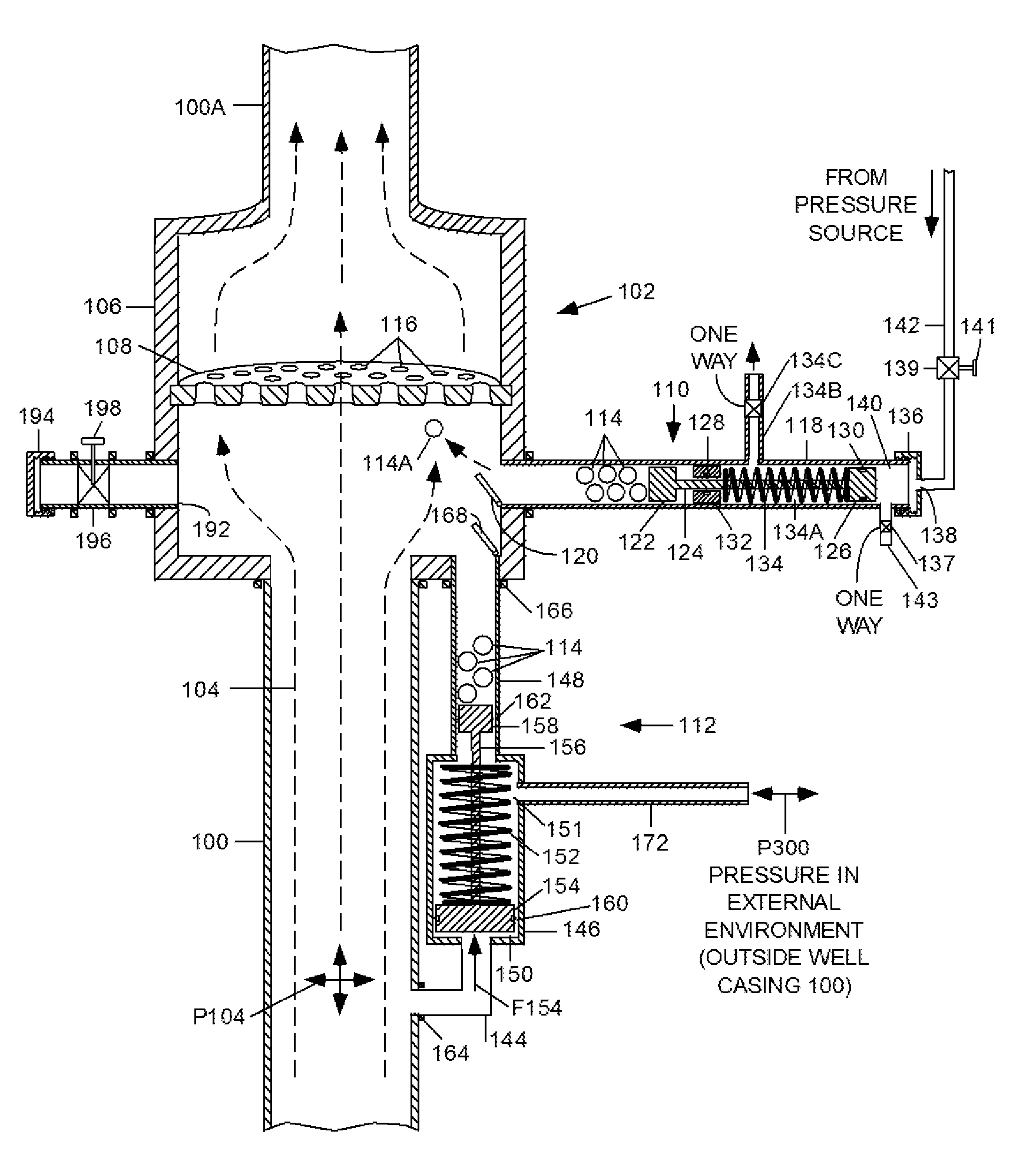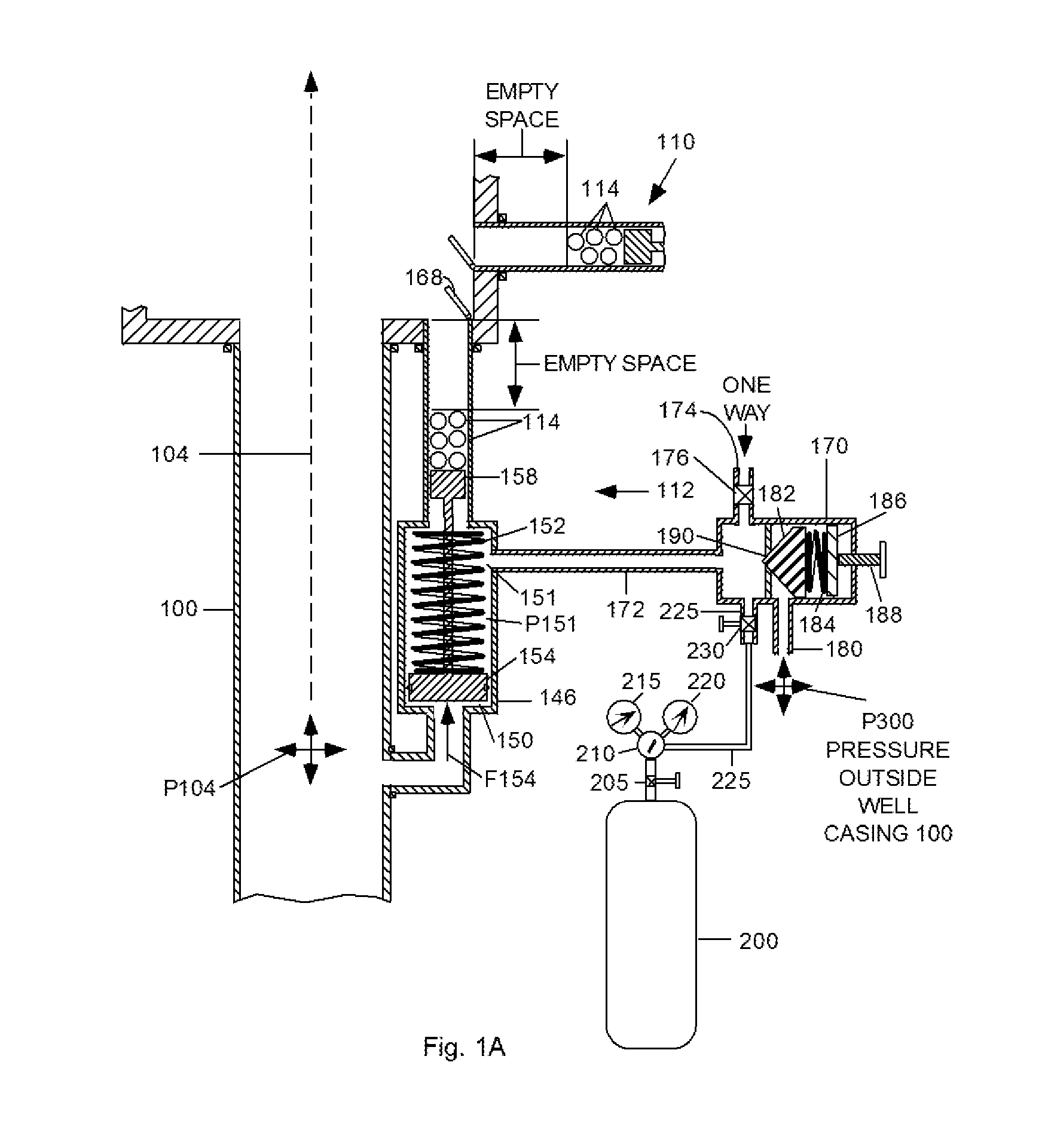Blow out protector valve employing ball baffle assembly for use with high-pressure fluids
a technology of protector valve and ball baffle, which is applied in the direction of drilling casing, drilling pipe, borehole/well accessories, etc., can solve the problems of concrete plugs in these wells and the deterioration of steel well casings, so as to prevent any blowout
- Summary
- Abstract
- Description
- Claims
- Application Information
AI Technical Summary
Benefits of technology
Problems solved by technology
Method used
Image
Examples
first embodiment
Description
FIG. 1 is an elevated, sectional view that shows a typical riser pipe or well casing with a lower section 100 that extends downward into the well, and a section 100A that extends upward above a BBBOP 102. Pipe 100 is transporting fluids 104, indicated by dashed lines and comprising mainly oil and gas, upward from an oil well. Pipe section 100-100A can be the passageway in a conventional BOP stack mounted above a well head, or in the riser pipe above the BOP stack. Additional BOPs can be inserted in the casing above or below BBBOP 102. BBBOP 102 performs the same function as the blind ram BOP described above, i.e., it is used when the well has been drilled and producing oil and / or gas and a drill pipe is not present inside casing 100-100A.
The present embodiment comprises a housing or container 106, a foraminous baffle or plate 108, one or more ball dispensing mechanisms (BDMs) 110 and 112, each with a group of balls 114. Housing 106 has an outlet 192 with a valve 196. Valv...
second alternative embodiment
Operation Of Second Alternative Embodiment
FIG. 8 is a cross-sectional view of a portion of housing 106′ of the present embodiment during prevention of a blowout. Increased pressure and flow from the well, indicated by dashed arrows 755, has caused balls 114 to rise within housing 106′ and block holes 116′ in upper baffle wedges 600. Balls 114 were either (a) dispensed automatically by BDM 112, (b) could have been left in the space between baffles 108′ and 250′ to be deployed automatically, or (c) dispensed manually by BDM 110.
Wedges 600 have been forced upward by the well pressure, pivoting around the outer edge adjacent the inner surface of housing 106′ and moving from a downward slanted position to horizontal. The upward pressure has compressed bumpers 715, causing them to spread out and form a seal between wedges 600 and housing 106′. With wedges 600 in this position, elastomeric seals 710 impinge tightly against pipe 610, completing the sealing of the well.
When it is desired to ...
PUM
 Login to View More
Login to View More Abstract
Description
Claims
Application Information
 Login to View More
Login to View More - R&D
- Intellectual Property
- Life Sciences
- Materials
- Tech Scout
- Unparalleled Data Quality
- Higher Quality Content
- 60% Fewer Hallucinations
Browse by: Latest US Patents, China's latest patents, Technical Efficacy Thesaurus, Application Domain, Technology Topic, Popular Technical Reports.
© 2025 PatSnap. All rights reserved.Legal|Privacy policy|Modern Slavery Act Transparency Statement|Sitemap|About US| Contact US: help@patsnap.com



